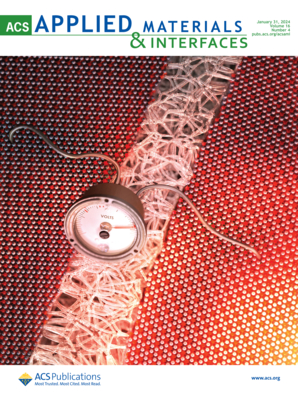固体氧化物电解池中La0.5Ce0.5Fe0.5Ni0.5O3−δ阳极的电化学甲烷重整
IF 8.2
2区 材料科学
Q1 MATERIALS SCIENCE, MULTIDISCIPLINARY
引用次数: 0
摘要
将甲烷部分氧化作用耦合到固体氧化物电解电池的阳极上,可以显著降低固体氧化物电解电池的开路电压和电能消耗。然而,开发用于SOEC的高级阳极以选择性地将CH4转化为合成气仍然是一个巨大的挑战。研究发现,在La0.5Ce0.5Fe0.5Ni0.5O3−δ的a位上替换Ce可以有效地改变Ni的化学状态和配位环境,从而生成NiO颗粒,空气活化可以进一步调节氧空位浓度,减小NiO颗粒的尺寸,从而提高POM性能,在650℃下CH4转化率为45.20%,CO选择性为92.67%。此外,在阳极中引入POM可以显著降低CO生产的电能消耗,从传统soec的3.64 kWh m-3降低到ch4辅助soec的0.86 kWh m-3。该研究为提高soec中CO2电解的电化学性能,同时在阳极将CH4转化为合成气提供了一种有效的策略。本文章由计算机程序翻译,如有差异,请以英文原文为准。

Electrochemical Methane Reforming on La0.5Ce0.5Fe0.5Ni0.5O3−δ Anode in Solid Oxide Electrolysis Cells
Coupling the partial oxidation of methane (POM) to the anode of solid oxide electrolysis cells (SOECs) can significantly decrease the open-circuit voltage and electrical energy consumption of the SOECs. However, developing advanced anode for SOEC to selectively convert CH4 to syngas still remains a great challenge. Herein, we find that Ce substitution at the A-site of La0.5Ce0.5Fe0.5Ni0.5O3−δ can effectively alter the chemical state and coordination environment of Ni with the generation of NiO particles, and the air activation could further regulate the oxygen vacancy concentration and decrease the size of NiO particles, which both contribute to the enhanced POM performance with CH4 conversion of 45.20% and CO selectivity of 92.67% at 650 °C. Moreover, the introduction of POM to the anode could remarkably decrease the electrical energy consumption for CO production from 3.64 kWh m–3 of conventional SOECs to 0.86 kWh m–3 of CH4-assisted SOECs. This study provides an effective strategy for improving the electrochemical performance of CO2 electrolysis in SOECs while simultaneously converting CH4 to syngas at the anode.
求助全文
通过发布文献求助,成功后即可免费获取论文全文。
去求助
来源期刊

ACS Applied Materials & Interfaces
工程技术-材料科学:综合
CiteScore
16.00
自引率
6.30%
发文量
4978
审稿时长
1.8 months
期刊介绍:
ACS Applied Materials & Interfaces is a leading interdisciplinary journal that brings together chemists, engineers, physicists, and biologists to explore the development and utilization of newly-discovered materials and interfacial processes for specific applications. Our journal has experienced remarkable growth since its establishment in 2009, both in terms of the number of articles published and the impact of the research showcased. We are proud to foster a truly global community, with the majority of published articles originating from outside the United States, reflecting the rapid growth of applied research worldwide.
 求助内容:
求助内容: 应助结果提醒方式:
应助结果提醒方式:


